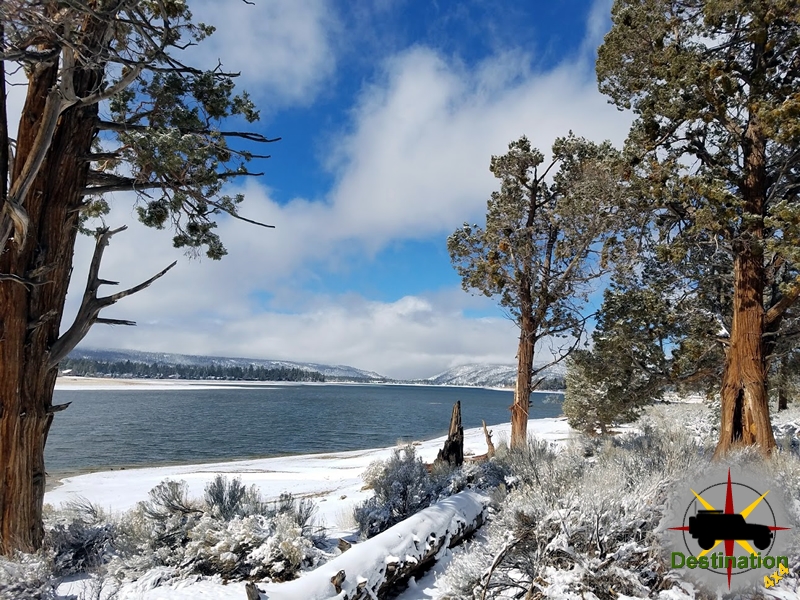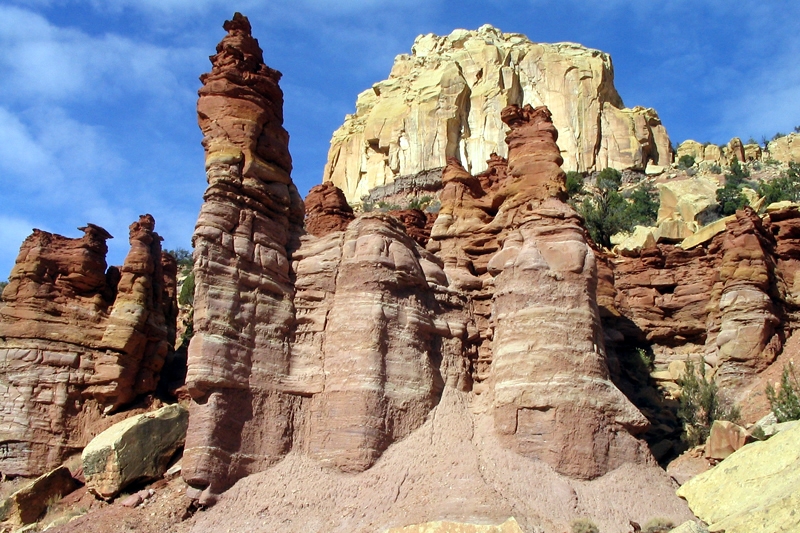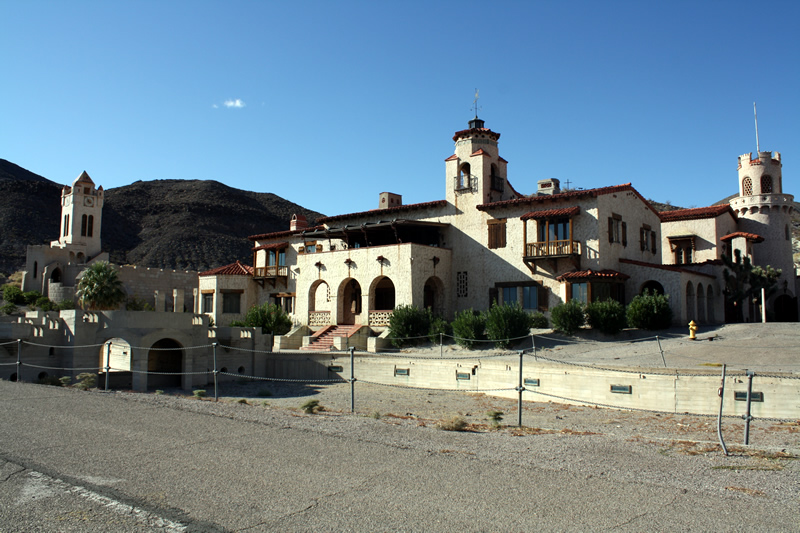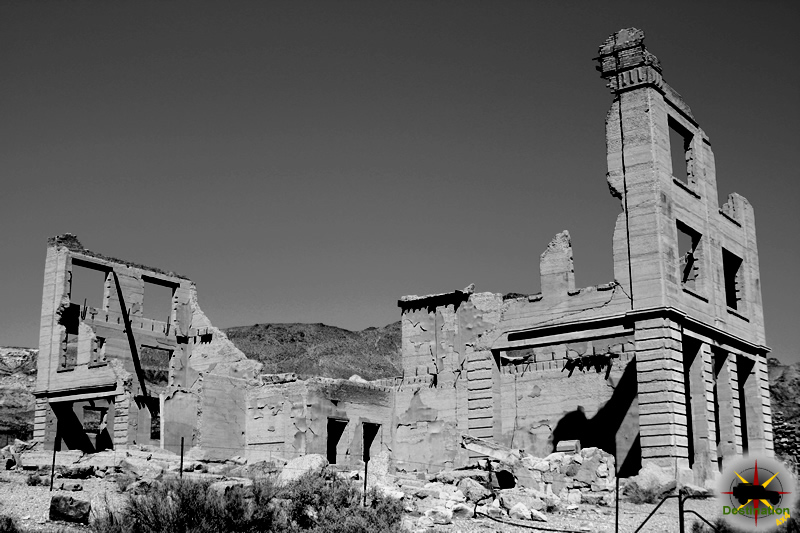
Boyer Nevada – Churchill County Ghost Town
Boyer, Nevada, is a ghost town located in northeastern Churchill County, Nevada, near the mouth of Cottonwood Canyon in Dixie Valley.
Establishment and Naming
Boyer was established in the early 1860s, with its post office opening on April 22, 1896, and operating until January 31, 1914. The town was named after Alva Boyer, a prospector and the first postmaster, who settled in the area and established the Boyer Ranch. Alva’s discovery of copper in the region marked the beginning of Boyer’s brief but notable history as a mining and ranching community. The town’s location, approximately 50 miles south of Lovelock, positioned it as a minor hub in Churchill County, connected to the Southern Pacific Railroad for shipping and banking purposes.
Economic Activities
Mining
Boyer’s economy was primarily driven by copper mining, which began in the early 1860s. The Boyer copper deposit, part of the Table Mountain Mining District, contained chalcopyrite and other copper sulfides found in fine fractures and amygdule fillings within mafic volcanic rocks. In 1861, several wagon-trains transported rich copper sulfide ore from Boyer to Sacramento, and subsequently to smelters in Swansea, Wales, indicating the high value of the ore extracted during this period. By 1907, mining activities were still significant, with reports of a proposed traction wagon road from Mill City to Goldbanks, including Boyer as a stop, highlighting its role in regional mining logistics. However, the lack of a local mill limited the processing of lower-grade ores, as only ore valued at $90 per ton or higher was economically viable for shipment.
Ranching
In addition to mining, Boyer supported a ranching community centered around the Boyer Ranch, established by Alva Boyer. The ranch served as a critical component of the town’s identity, providing agricultural support and serving as a base for the post office and mining operations. The 1907 Nevada Directory noted Boyer as a shipping point and banking town, with a weekly stage to Lovelock costing $3.00, underscoring its role in regional trade and communication.
Connection to Eagleville
Boyer was often associated with Eagleville, a mining area 11 miles northeast of Rawhide, approximately 50 miles from Boyer. Eagleville, active from the 1880s, had a post office from June 3, 1889, to March 13, 1913, and was known for placer mining between 1905 and 1908. Despite their proximity, the two towns were distinct, with a notable 1907 postal cover bearing both Boyer and Eagleville postmarks, suggesting some level of mail exchange or regional connectivity. The rarity of this cover, noted as unique in 2016, highlights the historical significance of Boyer’s postal operations.
Decline and Ghost Town Status
Boyer’s decline began in the early 20th century, culminating in the closure of its post office in 1914. Several factors contributed to this decline, including the exhaustion of easily accessible high-grade copper ore and the lack of infrastructure, such as a local mill, which made processing lower-grade ore uneconomical. The town’s remote location and reliance on distant markets for ore processing further limited its sustainability. By the mid-20th century, Boyer had become a ghost town, with only remnants of the Boyer Ranch and mining structures remaining, as documented in modern photographic records.
Churchill County Context
Churchill County, established on November 25, 1861, and named after Mexican-American War hero Brevet Brigadier General Sylvester Churchill, provided the broader historical and geographical context for Boyer. The county, with its seat in Fallon, was characterized by rugged terrain, including mountainous ridges and desert landscapes, which influenced the development of isolated communities like Boyer. The county’s economy benefited from reclamation projects like the Carson-Truckee Project (1903) and Lahontan Dam (1914), which transformed parts of the desert into agricultural land, but these developments primarily supported Fallon and other larger settlements, leaving remote areas like Boyer less impacted.
Conclusion
Boyer, Nevada, represents a quintessential example of a short-lived mining and ranching community in Churchill County. Named after Alva Boyer, the town thrived briefly in the late 19th and early 20th centuries due to copper mining and ranching activities. Despite its economic contributions, the lack of local processing infrastructure and the exhaustion of high-grade ore led to its decline, resulting in its current status as a ghost town. Today, Boyer serves as a historical reminder of Nevada’s mining heritage and the challenges faced by remote communities in sustaining economic viability.
Sources
- Nevada Expeditions, “Boyer”
- Mindat.org, “Boyer copper deposit”
- Uncovering Nevada, “Eagleville, 1907, Boyer Nevada”
- Wikipedia, “Churchill County, Nevada”
- Britannica, “Churchill County, Nevada”
Hot Creek Geologic Site
Hot Creek Geologic Site is located near Mammoth, Lake just off the 395 Highway in Mono County, California. The stream originates from Twin Lakes in Mammoth and continues on to Lake Crowley. The site is located near and a beautiful cold water stream which is located over a geothermal vent. Warm water is heated from a magma chamber located about three miles below the earths surface and bubbles up into the steam warming the water.

The Hot Creek does offer excellent fishing opportunities and popular among fly fisherman. Fishing used to be limited to barbless hooks.
No Swimming
The stream is now closed to swimming becuase “Earthquakes can cause sudden geyser eruptions and overnight appearances of new hot springs at Hot Creek. Water temperatures can change rapidly, and so entering the water is prohibited. ” Reports of hot water geysers up to 6 feet tall in 2006 and rapidly fluctuating temperatures apparently caused the closure of the stream to swimming.
My grandfather used to point out that some hot water vents where not in the same locations as when he was a child. Perhaps, within my life the hot springs area has become too dangerous to swim.
J Rathbun
As a child and young adult, the stream was open to swimming and my family did this routinely on almost every trip. I recall active conversations about the possibility of an geyser eruption which would kill us and we understood the risk of swimming. However, we also understood the possibility of an such an event was very remote when one considers the geologic time tables. My grandfather used to point out that some hot water vents where not in the same locations as when he was a child. Perhaps, within my life, the area has become too dangerous to swim.
Continue Reading →Mount Whitney Fish Hatchery

Located just outside of Independence, Inyo County, California the Mount Whitney Fish Hatchery has played an important role in the preservation of the Golden Trout. Beyond the hatchery’s primary purpose, the site makes an excellent location to pull off the highway, relax in the shade and enjoy a picnic lunch. This is how I was introduced to the hatchery 30 years ago, and it is still much anticipated stop each time I travel the 395 highway.
The fish hatchery began life in 1915, when the town of Independence raised money for and subsequently purchased a 40 acre parcel of ideal land in Oak Creek. Using foresight not seen in our time, Fish and Game Commissioner M. J. Connell directed he direct the design team “to design a building that would match the mountains, would last forever, and would be a showplace for all time.” Charles Dean of the State Department of Engineering and the design time team decided upon a “Tudor Revival” architectural style.

Utilizing a budget of $60,000 the hatchery project was started in March 1916 and complete one year later. The building was built using 3200 tones of local granite quarried nearby, boasts walls up to three feet thick and features a Spanish Tile roof. When the facility was brought online in 1917, the hatchery could produce two million fry per year.
The hatchery’s design, led by Charles Dean of the State Department of Engineering, prioritizes durability and aesthetic integration with the landscape. The grounds, landscaped by a gardener from Golden Gate Park, feature lush vegetation and a large fish-rearing pond framed by the dramatic backdrop of the Sierra Nevada, evoking the feel of an old European estate. The main building includes a visitor center with a gift shop, a fireplace, and interpretive exhibits, while the interior showcases troughs for fingerling fish and historical displays. Additional structures on the 40-acre site include nine small residences and six commercial buildings, contributing to its community-oriented function.
The fish hatchery operated until 2008, when on July 12th a flood and mudslide tore down the Oak Creek watershed which in 2007 was burnt in a wild fire. The resulting mudslide buried the fish rearing ponds, destroyed four buildings and killed the entire population of Rainbow Trout.

Currently a restoration project is in process, however the fate of the hatchery operation remains unknown.
Mount Whitney Fish Hatchery Map
References
El Fronterizo Newspaper
El Fronterizo was a prominent Spanish-language newspaper published in Tucson, Arizona, with two distinct periods: 1878–1910 and 1922–1929. Founded to serve the Mexican and Mexican-American communities, it promoted Hispanic culture, advocated for community interests, and addressed cross-border issues. This report examines its history, editorial stance, key figures, and impact, drawing on digitized records from the Library of Congress and Arizona Memory Project.
Founding and First Era (1878–1910)
El Fronterizo was established on September 29, 1878, by Carlos Ygnacio Velasco to meet the demand for Spanish-language media in Tucson, following the short-lived Las Dos Repúblicas (1877–1879). Published weekly and aligned with the Arizona Citizen, it ran for over 30 years under Velasco’s leadership. Velasco promoted Hispanic cultural pride, advocating an anti-assimilationist stance and repatriation to Mexico, while controversially supporting Chinese deportation due to railroad labor competition. In 1894, Velasco co-founded the Alianza Hispano-Americana, a mutual aid society, using El Fronterizo to advance its mission. The newspaper covered community events, obituaries, and cross-border issues, making it a vital genealogical resource.
Second Era (1922–1929)
A second El Fronterizo began on May 18, 1922, published by Enrique V. Anaya’s Spanish-American Printing Company, with the motto “defend Hispanic-American interests first and foremost.” Initially semiweekly, it became weekly after 1927. Editors included F.E. Schmidt, Francisco Lopez, and Carlos Bautista, with Isaac Montoya briefly co-managing. The newspaper focused on civic engagement, discrimination issues, and events like Charles Lindbergh’s 1927 Tucson visit. In 1928, Salvador Camacho took over, aligning it with Velasco’s legacy by calling it the “tercera epoca” and claiming a 1879 founding date. Publication ceased before 1930.
Impact and Legacy
El Fronterizo was a cornerstone for Tucson’s Mexican-American community, fostering cultural pride and political organization through the Alianza Hispano-Americana in its first era and addressing discrimination in its second. Its digitized archives (1878–1910, 1926–1929) via Chronicling America and Arizona Memory Project offer over 2,300 pages for researchers, preserving Arizona’s borderland history.
Conclusion
El Fronterizo’s two eras reflect the resilience of Tucson’s Mexican-American community. From Velasco’s cultural advocacy to Camacho’s revival efforts, it documented a vibrant history. Its digitized records ensure its legacy endures for genealogists and historians.
Sources: Library of Congress Chronicling America, Arizona Memory Project, University of Arizona Libraries.
Masonic California – Mono County Ghost Town
Originally known as Lorena, Masonic California is a ghost town located in the mountains north east of Bridgeport, California. Masonic was founded in 1860 by masons and therefor the name of the town. The Masonic District was a natural follower to the excitement is neighboring Aurora and Bodie. This area was small in scale comparatively and a stamp mill wasn’t onsite until 1907. The population maxes out at about 1000 people, and about four years later the excitement began to wane.

Early Beginnings (1860–1900)
The ghost town of Masonic, located approximately 10 miles northeast of Bridgeport in Mono County, California, emerged in the 1860s when a group of Freemasons discovered gold in the region. Named for the fraternal order, the settlement was initially called Lorena and developed into three distinct sections: Upper Town (originally Lorena), Middle Town, and Lower Town (formerly Caliveda). Situated in a canyon near the Nevada border in the Bodie Hills, Masonic’s early gold claims were overshadowed by larger strikes in nearby Bodie and Aurora, leaving the area largely undeveloped for decades.
In 1900, a 16-year-old prospector from Bodie named Joe Green rediscovered gold, establishing the Jump Up Joe Mine. Unable to finance its development, Green sold the claim, which sparked renewed interest in the Masonic Mining District. This district, spanning roughly 6 by 12 miles, encompassed over 40 claims at its peak and set the stage for Masonic’s brief boom.

Boom Years (1902–1911)
The discovery that transformed Masonic occurred on July 4, 1902, when partners John Stuart Phillips, Caleb Dorsey, and John M. Bryan struck a rich quartz ledge, founding the Pittsburg-Liberty Mine—named for Phillips’ hometown of Pittsburgh and the Independence Day holiday. Ore from the mine assayed at values between $35 and $800 per ton, with a reported nugget in 1904 valued at $4,000 per ton. This strike triggered a mining boom, and by 1906, Masonic’s population reached approximately 1,000 residents.
Infrastructure developed rapidly to support the growing community. By 1904, new roads linked Masonic to Bridgeport and Bodie, facilitating freight and passenger traffic. Lumber was transported nearly 50 miles from Mono Mills via the Bodie & Benton Railroad and six-horse wagons over Geiger Grade. Stagecoach lines connected Masonic to Wellington, Nevada, and Conway Ranch in the Mono Basin by 1906–1907. Telephone service arrived in 1905, and Middle Town saw the construction of a solid aspen-log cabin for Mr. and Mrs. H. H. Carpenter, notable for its rare glass-paneled door.
Middle Town became the commercial center, hosting a post office (established as Lorena in 1905, renamed Masonic in 1906), a general store, a livery stable, a butcher shop, and a hotel/boarding house. Lower Town featured the Jeffry Hotel, two saloons, and the Pittsburg-Liberty Mill, while Upper Town housed mine offices. The Masonic Pioneer newspaper, published by George Montrose of the Bridgeport Chronicle-Union, began in November 1905 but ceased after 2–3 years. Despite its growth, Masonic lacked a formal Masonic lodge, churches, or brothels, and maintained a relatively orderly reputation compared to Bodie, with no recorded shootings. Social life flourished, with dances featuring the Bodie Orchestra attracting large crowds.
In 1907, the Pittsburg-Liberty Mine opened a 10-stamp mill, allowing on-site ore processing. By 1910, the mine had produced approximately $700,000 in gold (equivalent to millions today). However, the ore veins were inconsistent, and production began to decline by 1911.

Decline and Abandonment (1911–1930s)
Masonic’s prosperity was fleeting due to shallow and uneven ore deposits. By 1911, mining activity had significantly decreased. A tramway constructed in 1913 to transport ore to the mill provided only temporary relief. The post office closed in 1912, briefly reopened in 1913, and shut permanently in 1927, with services transferred to Bridgeport. By 1920, the population had dwindled to just 12 residents, and mining activity nearly ceased by the 1930s. World War II’s ban on non-essential gold mining delivered the final blow, leaving Masonic abandoned.
Masonic Today
Today, Masonic is a true ghost town with minimal remnants, primarily in Middle Town, including stone cabin ruins, the timbered frame of the Pittsburg-Liberty Mill, and parts of the aerial tram system. Accessible via a 12-mile 2WD road from Bridgeport or an 8-mile 4WD route from Sweetwater Road, the site offers stunning views of the Sweetwater Mountains and Bridgeport Valley. Local lore suggests the ghost of John Phillips haunts the nearby Chemung Mine on Saturday nights, adding to the town’s eerie allure. Unlike the preserved Bodie State Historic Park, Masonic remains a “wild” ghost town, attracting adventurers and historians seeking an unpolished glimpse into California’s gold rush era.
Masonic’s ruins stand as a testament to its brief but vibrant history, reflecting the transient nature of mining towns in the American West. Its remote location and sparse remains preserve its rugged authenticity, making it a compelling destination for those exploring Mono County’s past.



